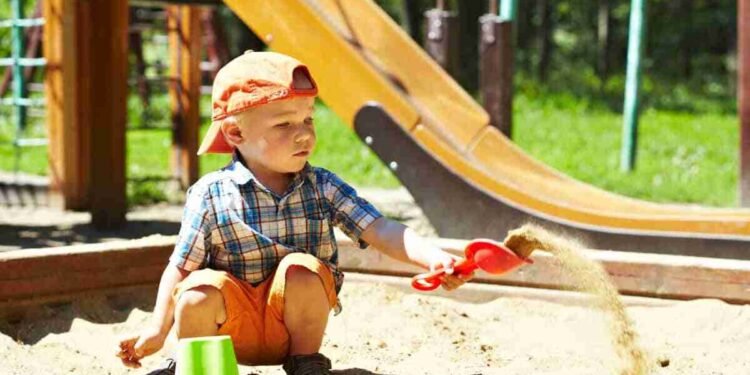Last Updated on January 25, 2025 by admin
Introduction to Safe and Stimulating Play Spaces
Designing engaging play areas for children is not just about filling a room with toys; it involves crafting an environment that intricately balances safety and fun while fostering learning and growth. Play spaces serve as vital arenas where children can express themselves, try new things, and develop essential skills, all within the safety of a well-thought-out environment. Central to these spaces are elements like educational rugs for kids, which provide an educational foundation beneath the children’s feet, turning a simple floor covering into an interactive learning tool.
These environments play a pivotal role in child development, impacting their cognitive and physical faculties. The considerations of such spaces go beyond safety; they extend into creating opportunities for creative expression and education. The core idea is to offer open-ended options encouraging exploration and stimulating imagination while ensuring children’s safety through vigilant design and layout planning.
Key Aspects of Safety in Play Area Design
Ensuring safety in children’s play spaces is crucial and involves understanding different safety measures that cater to various age groups. Potential injuries can be minimized by installing age-appropriate equipment and ensuring surfaces are well-cushioned. Such spaces often incorporate seamless cushioning materials to soften impacts and strategic layouts to prevent overcrowded play zones, which can lead to accidents.
From protecting edges to choosing non-toxic materials, every aspect of the space should be inspected for possible hazards. These strategies ensure that while children play and learn, they are shielded from harm. Platforms like Healthy Children provide valuable insights into building environments that are both protective and conducive to fun-filled learning experiences.
Choosing Child-Friendly Materials
The materials used in a play space define the tactile reality of that environment and must be carefully selected to endure the whims and exuberance of childhood play. Durable and easy-to-clean surfaces stand paramount in reducing maintenance while ensuring safety through non-slip properties. Selecting robust furniture and non-toxic, durable surfaces creates an area where children can interact with their surroundings without reservations.
Beyond safety and durability, these materials play a key role in the sensory experience of learning and play. Educational rugs serve a dual purpose of providing a soft landing while facilitating learning, prominently embedding key concepts and educational motifs into everyday activities seamlessly.
Incorporating Educational Elements
Integrating educational elements in play spaces turns them into dynamic learning environments that nurture a child’s natural curiosity and intellect. This goes beyond simple toys and involves installing features that incite learning through play, such as interactive wall panels, themed play areas, and digital interfaces designed for educational exploration.
Educational rugs play a significant role here, combining the convenience and aesthetics of a floor covering with engaging educational patterns and themes. These rugs are designed to invite interactive play, prompting children to ask questions and explore concepts actively as they play.
The Role of Colors and Patterns
In play area design, colors, and patterns are not merely visual elements; they are crucial psychological tools that can influence a child’s mood and cognitive development. Bright and vibrant colors are often associated with boosting creativity and energy, encouraging active play and involvement. In contrast, softer tones can have a calming effect, making them ideal for areas designated for focused activities or relaxation.
Patterns add an extra dimension, offering visual stimulation and often acting as learning cues themselves. For example, a rug with numbers or letters can serve as a playful introduction to early literacy and numeracy, transforming routine playtime into an opportunity for growth and learning.
Customization and Flexibility
As children grow and their interests evolve, the need for a play environment that adapts to these changes becomes evident. Customization and flexibility allow the play space to adjust to the fluctuating needs of its young users. By employing modular furniture and versatile play structures, play areas can transform with ease, ensuring continued engagement and accessibility.
This adaptability prevents spaces from becoming stagnant and supports a child’s emerging interests and developmental stages, providing a fresh and engaging environment as they grow.
Tips for Maintenance of Play Spaces
Maintaining the cleanliness and safety of a play space requires regular attention to detail. Establishing a cleaning routine and conducting safety checks are critical in prolonging the life of the area and ensuring it remains safe for its users. Regular maintenance schedules can help identify wear and tear early, allowing for prompt repairs and updates.
By staying proactive, caregivers can ensure that play areas remain inviting and that children have a safe and clean environment to explore their imaginations.
Conclusion: Balancing Safety and Creativity
In creating play spaces for children, balancing creativity with safety is essential. With a thoughtful approach to design—including careful material selection, color choices, and the incorporation of educational elements—these areas can become sanctuaries of growth and learning. The goal is to provide children with a safe place to explore, a dynamic environment that fuels their intelligence and curiosity.
We can craft environments that nurture young minds by utilizing all aspects of space design, from safety measures to aesthetic and interactive elements. For additional insights into creating such powerful experiences for children, explore resources from PBS Parents, a rich source of guidance on stimulating and playful learning environments.









